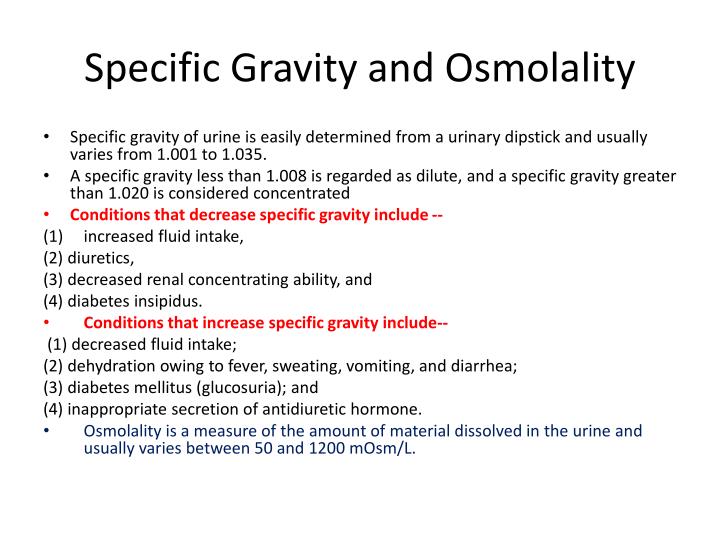
Serum osmolality is often used in cases of suspected poisoning or overdose. Normally their contributions are small, but when someone has high blood glucose (hyperglycemia, as found in untreated diabetes) or high blood urea (seen in diseases such as kidney failure), their influence can be significant. In addition to electrolytes, glucose and urea contribute to osmolality. Sodium comes into the body in the diet and is normally conserved or eliminated in the urine by the kidneys to maintain its concentration in the blood within a healthy range. It works with potassium, chloride, and CO2 (in the form of bicarbonate) to maintain electrical neutrality in the body and acid-base balance. Sodium is the major electrolyte in the blood and urine. When blood osmolality decreases, the release of ADH is suppressed, the kidneys release more dilute urine, the amount of water in the body decreases, thirst is diminished, and blood osmolality increases back toward normal.Ī blood (serum) osmolality test is primarily a measure of sodium dissolved in the serum (the liquid portion of blood).If this is not sufficient to restore the water balance, then thirst is also stimulated so that the affected person will drink more water. This also increases blood volume and blood pressure.

The retained water dilutes the blood and lowers blood osmolality back to normal.

The kidneys respond to ADH by conserving water and producing urine that is more concentrated. When blood osmolality increases with a decrease in the amount of water in the blood or an increase in the number of particles such as sodium, chloride, and glucose, a gland called the hypothalamus releases antidiuretic hormone (ADH).Water balance in the body is a dynamic process that is regulated by controlling the amount of water eliminated in the urine by the kidneys and by increasing or decreasing water drinking by regulating “thirst.” In a healthy person, the body perceives and reacts to changes in the amount of water and particles in the blood. Alternatively, it can be estimated from the major solutes expected to be in the blood or urine. A test for osmolality measures the amount of dissolved substances such as sodium, potassium, chloride, glucose, and urea in a sample of blood and sometimes in urine. Osmolality is a measure of the number of dissolved particles in a fluid. It is important to know that you must use the range supplied by the laboratory that performed your test to evaluate whether your results are “within normal limits.”įor more information, please read the article Reference Ranges and What They Mean. This is a reason why so few reference ranges are provided on this site. While accuracy of laboratory testing has significantly evolved over the past few decades, some lab-to-lab variability can occur due to differences in testing equipment, chemical reagents, and techniques. Values that are outside expected ranges can provide clues to help identify possible conditions or diseases. By comparing your test results with reference values, you and your healthcare provider can see if any of your test results fall outside the range of expected values. They are sometimes called “normal” values. Reference ranges are the values expected for a healthy person. Their meaning comes from comparison to reference ranges.

Laboratory test results are not meaningful by themselves.

If you do not have your lab report, consult your healthcare provider or the laboratory that performed the test(s) to obtain the reference range. They are typically found to the right of your results. The reference ranges for your tests can be found on your laboratory report.


 0 kommentar(er)
0 kommentar(er)
